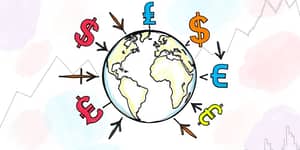
Investing is as much about understanding your inner comfort with risk as it is about market mechanics. When you merge the mathematics of drawdown with the nuances of personal resilience, you unlock a pathway to more confident, sustainable wealth-building.
Peak-to-trough decline of an investment portfolio—this is the essence of drawdown. It measures how far your portfolio dips from its highest value before recovering. When that dip hits its worst point, you record the Maximum Drawdown (MDD), a vital statistic to gauge past volatility and potential future stress.
Yet drawdown alone doesn’t guide your strategy. You must weigh it against your own ability to absorb losses. Objective ability to absorb losses—that’s your risk capacity, determined by assets, income streams, time horizons, and financial obligations. Contrast this with risk tolerance, which captures your emotional comfort with volatility, and risk appetite, which blends goals and willingness to accept uncertainty.
Having defined risk capacity, the next step is measurement. Several core factors shape your capacity to endure drawdowns without jeopardizing long-term goals. A clear analysis of these elements empowers you to set realistic drawdown limits.
Quantitative assessment methods bring clarity. You can employ balance sheet analysis, cash flow projections, stress tests, or customized questionnaires. In many cases, a simple risk-profiling tool highlights gaps between what you can handle and what feels comfortable.
Once you’ve measured capacity, translate it into actionable drawdown limits. A limit is the maximum loss you accept before enacting safeguards. Setting that limit higher than your capacity can force premature selling or worse—a derailment of your entire plan.
Conversely, overly conservative limits may yield a portfolio that underperforms its potential. The sweet spot lies where your limit aligns perfectly with your true capacity. When that threshold is breached, trigger predetermined safeguards: rebalancing, hedging, or temporary de-risking to protect against a deeper fall.
Automated risk management actions such as portfolio rebalancing ensure you respond swiftly when markets turn, avoiding emotional decisions and maintaining focus on your long-term vision.
Implementing this alignment requires discipline and systematic reviews. Follow these guiding principles to sustain a robust strategy:
Use the most conservative metric as constraint to prevent overexposure: if either your tolerance or capacity is low, let that set the ceiling for drawdown. Integrate regular scenario analyses to validate that your limit still feels appropriate amid changing markets.
Comprehensive financial plans using Monte Carlo simulations add another layer of confidence, illustrating the probability of various outcomes under different stress scenarios. By combining quantitative rigor with personal introspection, you build a resilient framework that adapts over time.
Consider two investors: one with a $500,000 portfolio and a 20-year horizon, another saving for a college fund in two years. The first might set a drawdown limit around 30% ($150,000), trusting markets to recover. The second, facing near-term obligations, might choose a limit under 10%, preserving capital for imminent tuition payments.
Applying the MDD formula illustrates the stakes. A portfolio peaking at $500,000 that dips to $350,000 records a 30% MDD [ (350,000 - 500,000) / 500,000 ]. When this figure exceeds your personal capacity, it’s time to reassess allocations, perhaps shifting toward less volatile assets or adding protective hedges.
While Modern Portfolio Theory offers the efficient frontier, remember it assumes generic risk levels. Always cross-check theoretical allocations against your unique financial and emotional profile. Dual-income households or those with fewer dependents can often absorb larger drawdowns than single-income families with multiple obligations.
Life events—career changes, expanding families, or new business ventures—alter capacity. Make reassessment a ritual after major milestones. Your drawdown limit isn’t set in stone; it’s a living boundary designed to evolve with you.
By aligning drawdown limits to personal risk capacity, you embrace both science and self-awareness. You safeguard your capital, respect your emotional bandwidth, and position yourself to seize opportunities without undue fear.
Investing with conviction doesn’t mean ignoring risk; it means understanding it deeply and mapping your limits to your life. When your strategy reflects who you are and where you’re headed, you become more than an investor—you become the architect of your financial future.
References













